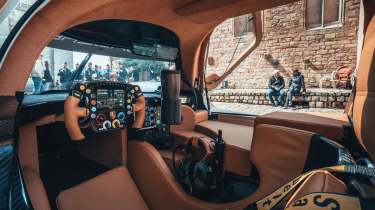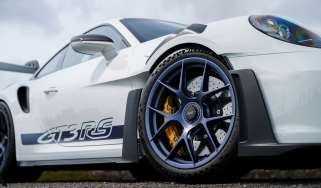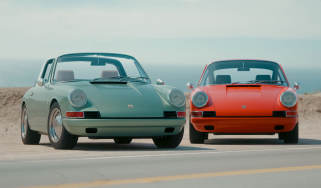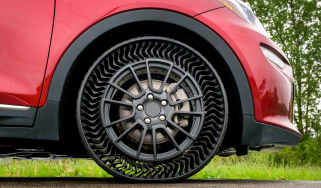The Porsche 963 RSP is a road-going Le Mans Hypercar (sort of)
Porsche has converted a 963 WEC racer for road use – with one or two caveats
If you didn’t think hypercars could get more extreme than the Aston Martin Valkyrie or Mercedes-AMG One, think again. Where most hypercar makers brag about incorporating motorsport technology into their road cars, the new Porsche 963 RSP is the real deal – a genuine Le Mans hypercar that’s been converted for road use, packing all the toys from the competition car (including a race-spec hybrid V8) in a semi-street legal package. Yes, really.
The 963 RSP has been built to celebrate 50 years since another Porsche prototype took to the streets for the first time – the 917. In 1975, 917 chassis 30 was converted for the road with minimal alterations and driven by its owner from Porsche’s Zuffenhausen factory to Paris. That 917 is still in use today, and inspired the 963 RSP project.
Based on the 963 that won IMSA and WEC titles last year, the RSP has been created for Roger S. Penske (hence the name), who led Team Penske to wins and championships with the 917/30 in the 1970s. Today, Penske runs the 963 as a Porsche works team, and Roger was key in making the road-going version a reality. ‘We felt it was time to create the most exciting car we could imagine,’ he said. ‘Just like the 917, I wanted this car to be authentic to its origin and have as few changes to it as possible. When we got into the project, the differences in the two generations of race cars provided a great challenge. What emerged is a car that has lost none of its edge and is exciting whether on the track or on the road.’
There are one or two caveats regarding the legality of the RSP, however. It can indeed be driven on the road with number plates, but requires special permission from local authorities to do so (it’s already been driven in France with backing from the Automobile Club de L’Ouest, which runs the Le Mans 24 Hours). This isn’t a full-blown homologated street car, then, but it has been modified to make it more livable on those occasions where it’s allowed to venture out into the wild.
The changes have been carried out by Porsche’s Sonderwunsch team at a facility in Atlanta, and include adapted lights with indicator repeaters, a more luxuriously trimmed, brown alcantara and leather interior (now with a horn and cup holder), bespoke vents in the wings and the removal of the rear wing blanking plates, which are a requirement on the competition car. The wheels are forged 18-inch OZ racing items wrapped in wet weather tyres, and of course, mounts for the front and rear number plates have been installed too.
Mechanically, the RSP rides higher than the race car on softened Multimatic dampers, and the engine remains in standard race tune. It’s a 4.6-litre twin-turbo V8 that’s related to the 918 Spyder's engine, generating 671bhp. A Bosch and Williams Advanced Engineering-supplied hybrid system supports the ICE, with a motor generator unit providing additional power and recuperating energy under braking at the rear axle. The MGU is mounted between the combustion engine and a seven-speed Xtrac gearbox, and the RSP’s powertrain has been remapped for smoother running at road speeds. It can even run on pump feel, or electric power alone.
The design is, quite literally, pure race car, with a silver and black colour scheme to reference that original road-going 917. The livery is painted onto the Kevlar and carbonfibre bodywork, and there’s an enamel Porsche badge in place of the decal you’ll find on the competition car.
Fittingly, Roger Penske was nominated as the customer for this one-off creation, and it’s set to go on display at this year’s 24 Hours of Le Mans before being shown later at the Porsche Museum in Stuttgart and the Goodwood Festival of Speed. That’ll be your only chance to see it, unless of course you catch Roger commuting on the M25.










